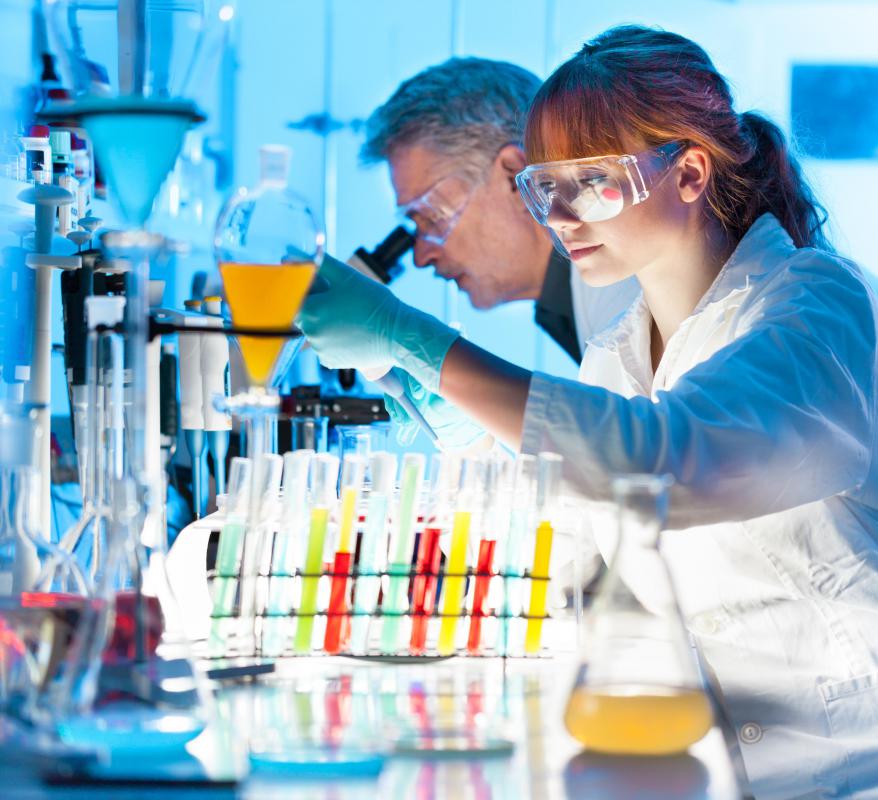At TheHealthBoard, we're committed to delivering accurate, trustworthy information. Our expert-authored content is rigorously fact-checked and sourced from credible authorities. Discover how we uphold the highest standards in providing you with reliable knowledge.
What do Stem Cell Scientists do?
Stem cell scientists carry out scientific research on stem cells, both in order to understand them better and to explore their potential for various health and medical purposes. Found in most multicellular organisms, stem cells have extraordinary rejuvenation abilities that enable them to rebuild entire body tissues or certain specific tissues in the body. The stem cells that can give rise to entire body tissues are called embryonic stem cells and are found in the interior mass of a blastocyst; a blastocyst is an early stage embryo. The second type of stem cells are adult stem cells, called so to distinguish them from the embryonic ones; they actually occur throughout the body in adults as well as children.
Embryonic stem cells are pluripotent and adult stem cells are multipotent. Pluripotency means that embryonic cells are capable of endless cell division and can still remain undifferentiated. They are capable of forming every kind of body tissue, except the placenta. The multipotent adult stem cells, on the other hand, are not so versatile and can only form certain types of tissues, usually only the type in which they are found. Adult stem cells act as body repair kits, renewing specialized cells every time they are needed.

Since stem cells are capable of regeneration, they offer grand possibilities in medical research. They could be used to repair damaged tissue and replaced damaged organs, and treat a variety of conditions like leukemia, multiple sclerosis, cystic fibrosis, motor neuron disease and osteoporosis. Stem cell scientists have achieved a measure of success in these endeavors, but a lot more stem cell research is still needed.

There are two significant problems in using stem cells in medical treatment. Firstly, there is the likelihood of the body rejecting the new generated tissues and organs outright, or else the necessity of taking immune suppressant medicines on a permanent basis to avoid immune rejection. Secondly, stem cell scientists are not yet able to control or predict the manner in which a stem cell transplant may divide in a patient's body. There have been instances of stem cells dividing in an out of control way, leading to cancerous tumors.

While this issue is still being studied in the research lab, the first problem may be resolved through therapeutic cloning. In this, stem cell scientists take DNA from a patient, inject it into a donor egg and induce the egg to divide and form a blastocyst. Stem cell harvesting is then done from this blastocyst and these stem cells will have the same DNA as the patient. As a result, the patient's body is likely to accept the tissues grown from these stem cells and it may also be unnecessary to take immune suppressant drugs here.
Another area that stem cell scientists are exploring is reproductive cloning. So far sheep, cattle, dogs and other animals have been successfully cloned, and the next obvious step is cloning human beings. This research had turned into a minefield of controversy, with supporters touting bright new possibilities in medical research and opponents decrying what they see as a devaluation of human life. The debate is still on and has influenced the stem cell policy in nations around the world. Many countries have either banned human cloning outright or have imposed certain stringent limitations on stem cell research.
AS FEATURED ON:
AS FEATURED ON:













Discuss this Article
Post your comments